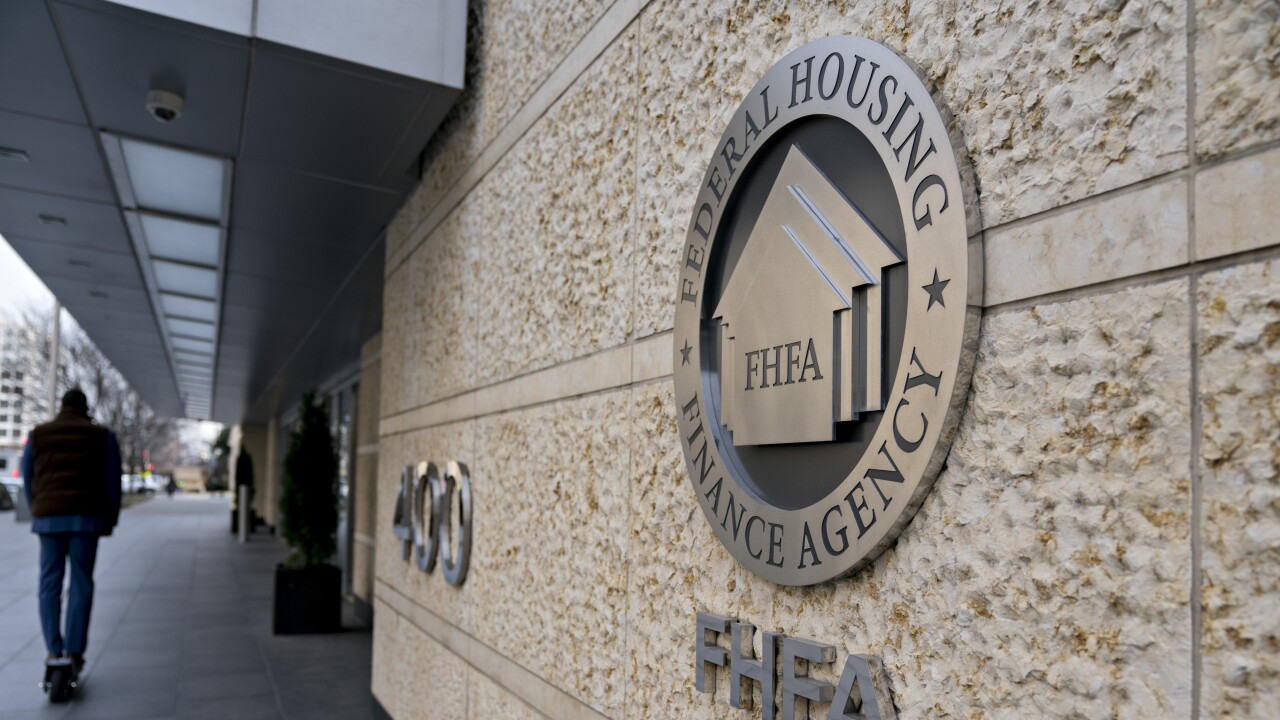Ginnie Mae is looking to start a pilot program to securitize digital mortgages as early as 2019, but issuers would not be able to commingle loans using traditional paper files in those deals.
The federal agency's comments are from
"The business model we envision will allow issuers to securitize digital promissory notes that are executed on a uniform smart document format, with elements and specifications like the SMART Doc format used by the government-sponsored enterprises Fannie Mae and Freddie Mac," the report stated.
It plans to work with the GSEs to get the benefit of their experience with securitizing digital mortgages and to make sure its solution can easily be adopted by lenders that are using similar technology for conforming loans.
"We believe aligning policies across federal housing programs and developing technical standards are foundational steps; they will be our priority during the initial stages of our digital collateral strategy," the report said. "We aim to complete these foundational steps by 2019 and then authorize pilot programs enabling issuers to securitize digital mortgages, even as we continue to develop other aspects of our digital collateral strategy."
Maintaining the liquidity of the mortgage servicing rights in pools that use traditional processes is one of the reasons for the segregation of collateral. "When we consider the pool-level structure of the MBS program, we believe that allowing traditional paper notes to be included within a pool or loan package, which also contains digital mortgages, may reduce the marketability of the corresponding MSR," the report said.

However, digital mortgage pools will be able to go into multiple issuer securities, along with other pools comprised of traditional paper notes. "We plan to adjust pool and loan package requirements to accommodate various levels of digital mortgage production and will be considering additional incentives for issuers to go digital," the report said.
In addition, differences in the digital submission process compared with that used for traditional securities collateral will not allow the two to be mixed in a Ginnie Mae issuance.
Digital pools will be delivered to a designated Ginnie Mae electronic vault and subject to an automated, system-based initial certification process.
Ginnie Mae will be switching from a hard SecurID token for users to make data submissions to a soft token app. Hard tokens are physical devices that need to be accessible to the user and can get lost. "Soft tokens replicate the security advantages of multifactor authentication, while simplifying distribution and lowering costs," the agency said.
Later this summer, the agency will be rolling out a new portal, MyGinnieMae, for testing with what it termed a small number of early adopter issuers. Among the security features will be single sign-on, the use of a secure image and phrase when the user logs into the system, and a one-time password sent the first time the user logs into a secured business application during each portal session to protect against access by unauthorized users.
In another section of the report, Ginnie Mae said it is looking at ways to allow servicers to obtain
The agency is also looking at changing how those advances are handled when an issuer has failed. "This step could potentially alleviate one of the greatest sources of counterparty risk we face: the potential for an issuer to be overwhelmed by the need to advance on defaulted loans in a time of economic stress," Ginnie Mae said. But statutory or regulatory changes might be needed to make this financing available.
It is also looking at increasing the number of entities allowed to own Ginnie Mae MSRs. An industry trend is for servicers to concentrate on the physical function but to sell
But servicing investors shouldn't expect any changes anytime soon. "Statutory or regulatory change might have to occur before new types of entities could own MSRs. And we would need to ensure that capital from nontraditional sources was available on terms that promote stability and discourage large-scale withdrawal of capital in times of stress," the report said.





